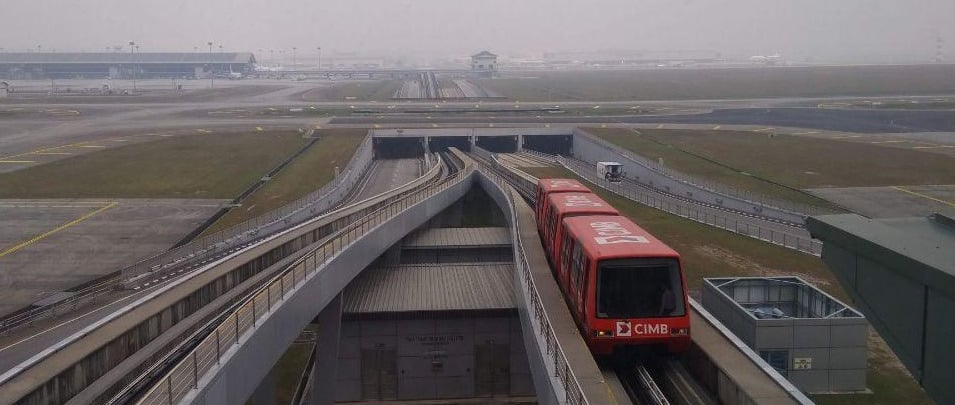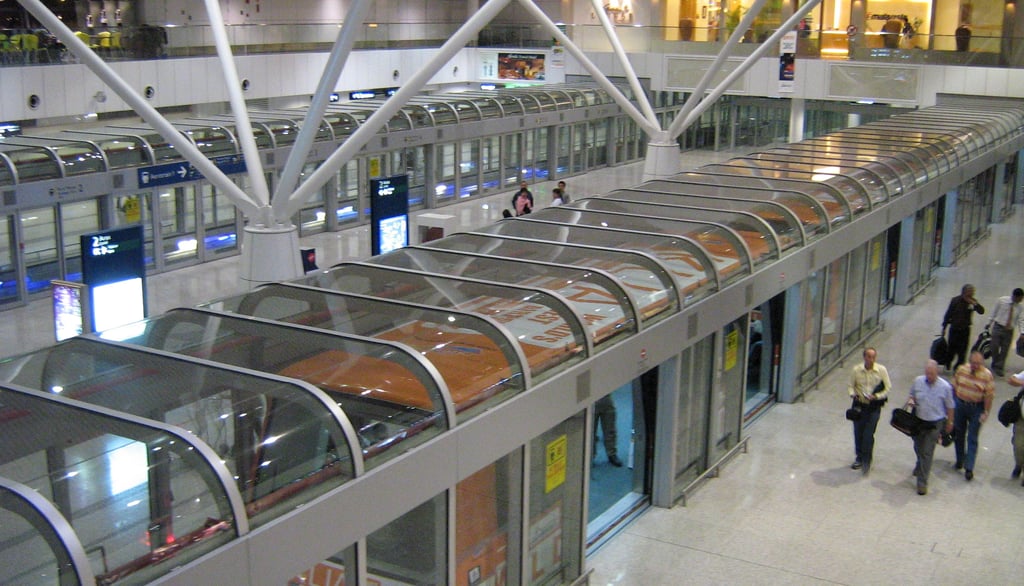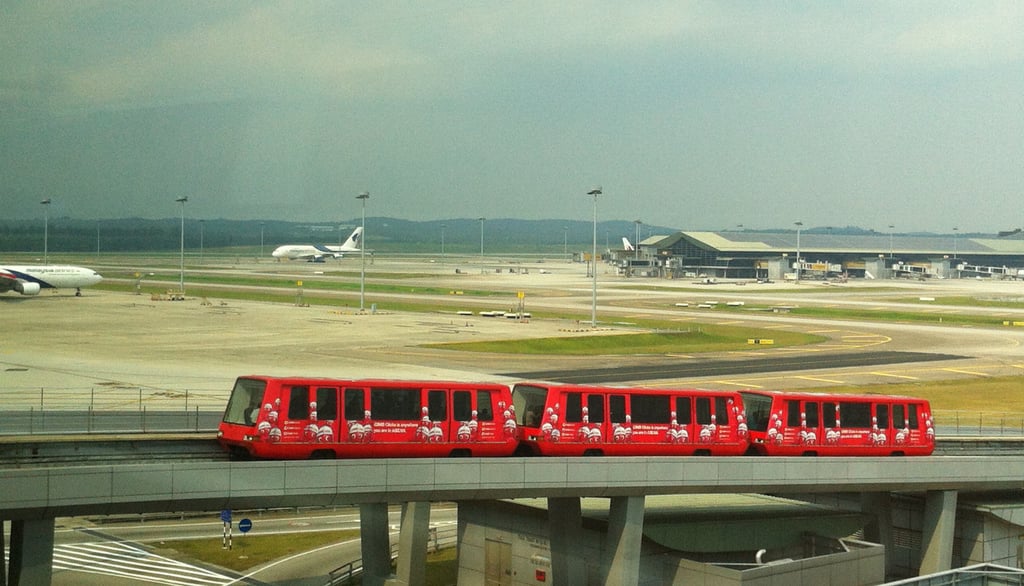KLIA Aerotrain
KLIA Aerotrain resumes 1 July after 2.5 years
admin
6/24/20254 min read


Kuala Lumpur International Airport (KLIA) in Malaysia is set to resume its driverless aerotrain service on July 1, after a nearly 2.5-year suspension. This 1.3km train route connects KLIA's main terminal to the satellite terminal, which serves international flights, and its return is seen as a much-needed relief for international passengers who have had to rely on shuttle buses during the service’s downtime. The breakdown of the aerotrain service in February 2023, which forced 114 passengers to walk along the tracks, highlighted significant operational issues and damaged the airport's reputation. With the aerotrain returning, KLIA aims to restore some of its lost credibility and address a series of operational shortcomings that have plagued the airport in recent years.
For passengers traveling between KLIA’s terminals, the aerotrain is a quicker and more efficient option compared to the shuttle buses. The latter, while still in use, has proven to be less reliable, slower, and more inconvenient. Passengers must carry their luggage between terminals, and the shuttle buses are often delayed or crowded. Many travelers expressed preference for the aerotrain, citing its efficiency and ease compared to the shuttle bus. Some also criticized the shuttle bus experience at KLIA, noting that the airport’s layout is not as seamless as that of Changi Airport in Singapore. The lack of clear signage and the distance to walk before boarding the buses have made the KLIA experience more cumbersome for international travelers, further damaging the airport’s image.


KLIA, which opened in 1998, once held a spot among the world’s top 10 airports, ranking as high as 1st place in some years, but its standing has declined in recent times. In 2024, KLIA placed 65th in Skytrax's prestigious World Airport Awards, a considerable drop from its previous rankings. In contrast, airports like Changi (Singapore), Hamad International (Qatar), and Haneda (Japan) have maintained their dominance, taking the top three spots. This decline in rankings reflects broader challenges faced by the airport in terms of efficiency, passenger experience, and infrastructure reliability. KLIA’s poor performance in these areas has placed it at a significant disadvantage as the global travel industry continues its post-pandemic recovery, with competition from regional hubs intensifying.
Despite these setbacks, KLIA has shown signs of recovery. Passenger traffic increased by 21% in 2024, reaching 57.1 million, with 41.9 million of those being international passengers. The airport’s ability to draw in a large volume of travelers, especially after the pandemic, demonstrates that there is still demand for Malaysia as a hub. KLIA was also recently recognized as the most-connected low-cost carrier hub in the Asia-Pacific region, according to the 2024 Megahubs Index from the Official Airline Guide. This is a positive sign, reflecting the airport’s connectivity and importance for the low-cost carrier market. However, experts point out that in order for KLIA to regain its status as a world-class airport, it must improve its overall operations, including better inter-terminal transfers, faster baggage handling, seamless biometric boarding, and more efficient passenger flow.
The resumption of the aerotrain service is one part of KLIA's broader effort to rebuild its reputation and restore trust among passengers. The aerotrain replacement project, however, has faced significant delays. Originally scheduled to be completed by July 2024, then extended to January 2025 and later to March 2025, the project had to be pushed back multiple times. These delays were attributed to several factors, including the termination of the original aerotrain contract and the appointment of a new contractor. The new contract is now being managed by French transport company Alstom, in collaboration with local firms IJM Construction and Pestech Technology. The new aerotrain sets, costing RM456 million (approximately S$137 million), are designed to carry 270 passengers each, an upgrade from the previous 230-passenger capacity. There are currently three aerotrain sets in operation: two will run simultaneously while one remains on standby.


While the return of the aerotrain service is a step in the right direction, industry analysts caution that KLIA's future success depends on more than just the return of its internal transport system. The airport must address several other issues that affect its competitiveness on the global stage.
To regain its status, KLIA must ensure that its improvements go beyond one-off fixes and result in long-term, high-performance service. As Malaysia chairs the Association of Southeast Asian Nations (ASEAN) in 2025 and host Visit Malaysia Year in 2026, the pressure is on to present a smooth, efficient, and modern airport experience to the world. Wan Agyl emphasized that KLIA needs to provide a consistent and high-quality experience across all areas, particularly when competing with airports like Changi, Incheon, and Hamad International, which are known for their reliability and efficiency. KLIA must focus on integrating better systems, ensuring faster baggage handling, and leveraging digital tools to improve the passenger journey.
The coming months will be a critical period for KLIA. If it can successfully integrate the new aerotrain service and continue to enhance its operations, it could mark the beginning of a significant turnaround for the airport. However, analysts warn that KLIA must prove that these improvements are not temporary, but part of a sustained effort to restore its position as a leading global airport. The challenge for KLIA will be to meet and exceed passenger expectations, building a reputation for reliability, efficiency, and smooth travel experiences.
Explore
contact
© 2025. All rights reserved. Metro Rail Travels Kuala Lumpur.
Terms & Conditions and Disclaimer: This Website is not the official website of MRT Corp or Rapid KL. We serve to highlight the points of interest surrounding the rail transit stations and are not related with these entities. For further details, please click on this link.
Visit our social media pages
